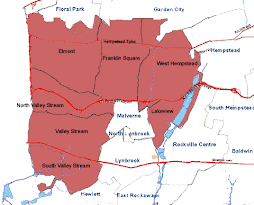Dress for the Season
Winter has arrived and you should dress for the season.
Wear loose, lightweight, warm clothing in several layers. Trapped air between the layers acts as an insulator. Layers can be removed to avoid perspiration and subsequent chill.
Outer garments should be tightly woven, water repellent and hooded.
Always wear a hat or cap on your head since half of your body heat could be lost through an uncovered head.
Cover your mouth with a scarf to protect your lungs from extreme cold.
Mittens, snug at the wrist, are better than gloves because fingers maintain more warmth when they touch each other.
Physical Exertion
Winter storm conditions and cold waves are the deadliest types of weather.
Cold temperatures put an extra strain on your heart. Heavy exertion, such as shoveling snow, clearing debris or pushing a car, increase the risk of a heart attack.
To avoid problems, remember these tips:
Stay warm, dress warm and SLOW DOWN when working outdoors.
Take frequent rests to avoid over exertion.
If you feel chest pain -- STOP and seek help immediately.
Winter Sports Safety
New York State offers an abundance of sports activities during the winter season. From skiing and snowboarding to ice climbing, hiking and other outdoor pursuits, parents and children should follow the safety rules of the sport.
Most importantly, use the proper equipment and check to make sure everything is in proper working condition. A well-fitting ANSI/SNELL certified helmet will assure a safer, more enjoyable wintertime experience whether you are skiing, sledding, snowboarding or skating.
Dress in multiple, lightweight layers to stay warm and dry while enjoying the outdoors. Check the weather forecast but be prepared for anything.
If you are heading into the backcountry, never travel alone. Let someone know your route and estimated time of return.
Skiers and snowboarders should go on runs that are appropriate for their ability. Stay in control at all times and be able to stop or avoid other people or objects. Obey all posted signs and warnings.
No matter what sport you participate in, always focus 100 percent of your attention on the activity and the terrain you are on. Moreover, rest when you are tired.
Safe Sledding
Winter is a fun time for children, but it also may be dangerous. Parents should be aware of some simple safety tips for their children when they go sledding or tobogganing:
Children should never use streets or roads for sledding unless they are blocked off from traffic.
Children should sled only during daytime hours.
Do not sled on icy hills. Sledding hills should be only snow covered.
Avoid sledding over snow bumps or anything that may cause the sled to become airborne.
Never sled alone. An adult should always accompany small children.
Children should stay out of the paths of other sledders. In addition, if the slopes become busy, they should move off them quickly.
Parents, if you are sledding with your children, follow these rules yourselves.
Safe Skating
Winter is a fun time for children, but it also may be dangerous. Parents should be aware of some simple safety tips for their children when they go ice-skating:
If possible, skate at areas that have been approved and posted for ice-skating.
Never skate alone. Always have at least two people present.
Children should never be allowed to skate on a pond unsupervised.
Remember ice thickness is never consistent on lakes and ponds. Water currents, particularly around narrow spots, bridges, inlets and outlets are always suspect for thin ice.
Stay away from cracks, seams, pressure ridges, slushy areas and darker areas that signify thinner ice.
Never skate after dark.
Hypothermia
Prolonged exposure to cold temperatures can cause hypothermia, especially in children and the elderly.
Watch for these symptoms:
Inability to concentrate
Poor coordination
Slurred speech
Drowsiness
Exhaustion
Uncontrollable shivering, followed by a sudden lack of shivering
If the person’s body temperature drops below 95 degrees Fahrenheit, get emergency medical assistance immediately! Remove wet clothing, wrap the victim in warm blankets and give warm, non-alcoholic, non-caffeinated liquids until help arrives.
Frostbite
People working or playing outdoors during the winter can develop frostbite and not even know it. There is no pain associated with the early stages of frostbite, so learn to watch for these danger signs:
First, the skin may feel numb and become flushed. Then it turns white or grayish-yellow. Frostbitten skin feels cold to the touch.
If frostbite is suspected, move the victim to a warm area. Cover the affected area with something warm and dry. Never rub it!
Then get to a doctor or hospital as quickly as possible.
Snow Blower Safety
Do you have a snow blower? Did you know that most snow blower injuries happen because the operator did not read the operating instructions?
So, read your owner’s manual and follow these tips:
Never leave your snow blower running and unattended.
Make sure the discharge chute is not aimed at passing motorists or pedestrians.
Never put your hands into the discharge chute or augers to clear stuck snow and ice.
Never add fuel when the engine is running and hot.
Make sure you know how to turn the machine off quickly.
P.O. Jesse Atchison
Tuesday, January 3, 2012
Subscribe to:
Post Comments (Atom)



No comments:
Post a Comment